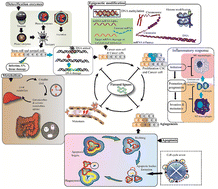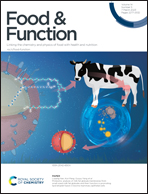Anticancer potential of flaxseed lignans, their metabolites and synthetic counterparts in relation with molecular targets: current challenges and future perspectives
Abstract
Lignans are known dietary polyphenols found in cereals, plants and seeds. Flaxseed is one of the major sources of lignans mainly existing in the form of secoisolariciresinol diglucoside (SDG) which can be metabolised by the gut microbes into secoisolariciresinol (SECO) and mammalian lignan (enterodiol and enterolactone) that are easily absorbed through the intestines. Numerous studies reveal that flaxseed lignans (FLs) can be promising chemotherapeutics/chemopreventive agents. Their anticancer activity can occur through the induction of apoptosis, inhibition of cell proliferation, and the hindering of metastasis and angiogenesis. The anti-carcinogenesis of flaxseed lignans is achieved through multiple molecular mechanisms involving biochemical entities such as cellular kinases, cell cycle mediators, transcription factors, inflammatory cytokines, reactive oxygen species, and drug transporters. This review summarizes the bioavailability of FLs, their anticancer mechanisms in relevance to molecular targets, safety, and the scope of future research. Overall, FLs can be utilized in functional foods, dietary supplements, and pharmaceuticals for the management and prevention of cancers.

- This article is part of the themed collection: Food & Function Review Articles 2023


 Please wait while we load your content...
Please wait while we load your content...